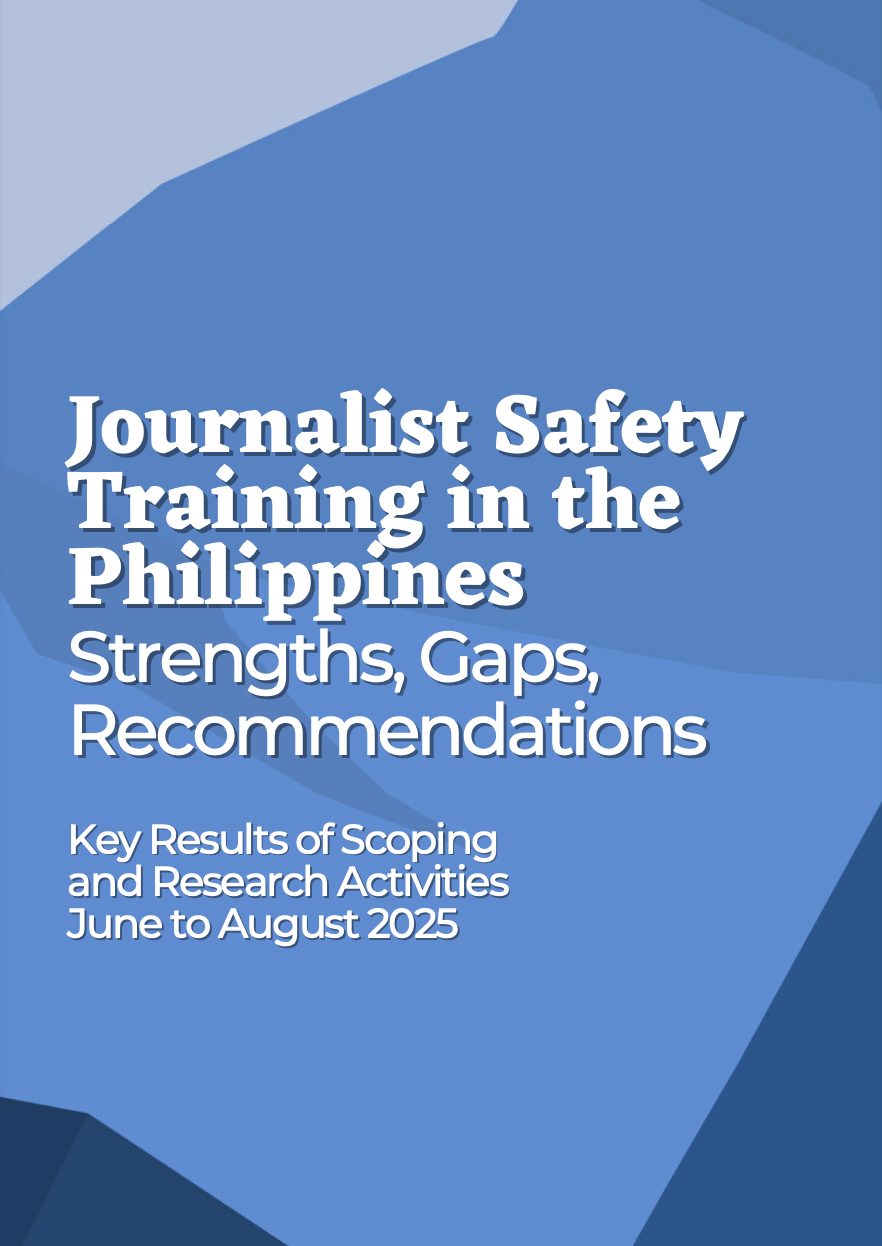Developing a Resource Guide for Training Journalists on Media Safety

Do you conduct training for journalists and media workers on safety and security? Covering physical safety, digital security, legal concerns, psychological well-being, or gender issues? Need a practical, easy-to-use resource tailored to the realities of Philippine newsrooms?
With the numerous training activities being conducted by different organizations to equip media workers to be safe and protected in their work, the project, “Journalist Safety: A Practical Guide for Trainers” is being implemented to develop, produce and popularize a training resource on media safety for journalists and media workers.
The safety trainers’ guide will help journalists and media organizations deliver consistent, quality, and responsive capacity building programs on safety and security.
The project builds on the work of the Philippine Plan of Action on the Safety of Journalists (PPASJ), a multi-stakeholder national blueprint on media safety anchored in the UN Plan of Action on the Safety of Journalists and the Issue of Impunity.
The project’s Phase 1: Scoping and Research has been completed, implemented in June to August 2025 by the Asian Institute of Journalism and Communication (AIJC) in partnership with Red Batario of the Center for Community Journalism and Development (CCJD). The first phase was supported by International Media Support and co-funded by the European Union and the Ministry of Foreign Affairs of Denmark.
This project phase has produced the publication, “Journalist Safety Training in the Philippines: Strengths, Gaps, Recommendations” (September 2025), which draws from a review of documentation of past safety training programs for journalists; in-person focus group discussions (FGDs) and key informant interviews (KIIs) through an online questionnaire with journalists; and a multi-stakeholder workshop with representatives from government, academia, civil society, and media.
The research results highlight strengths and gaps in journalist safety training in the Philippines, forming the basis for recommendations to improve curricula, materials, and stakeholder collaboration for journalists’ protection. These are presented under four key themes that emerged from the findings: content and structure, training methodology, planning and preparation, and trainer development and support.
For subsequent project implementation, Phase 2 will see the development and writing of the trainers’ guide, and Phase 3 will involve pretesting, pilot-testing and popularization of this training resource.
These phases present opportunities for partnership, sponsorship, or funding support from institutions that share our commitment to advancing media freedom and strengthening the capacities of journalists and media workers in the country.
AIJC and CCJD are among the founding members of the Movement for Media Safety-Philippines (MMSP), a coalition of media organizations and press freedom advocates.